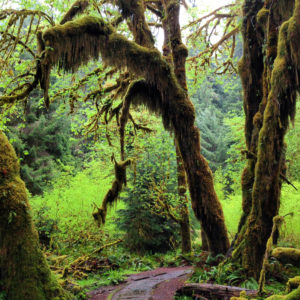Olympic Peninsula weather, like the landscape itself, is diverse and sometimes surprising—no matter the season. But the generally moderate climate is one more reason people are drawn to the region year round.
Prime conditions for watersport enthusiasts. You can pretty much count on pleasant weather in Port Townsend, which makes it a favorite spot for boating and sailing buffs.
A sunny spot in the rain shadow. Sequim sits in the rain shadow of the Olympic Mountains, and that means very little rainfall—just an average of 17 inches each year. Sequim offers the perfect climate for outdoor sports, and a bounty fresh from the farm.
A typical marine climate. Surrounded by mountains and sea, Port Angeles experiences a typical marine climate. Expect cool summers, mild and cloudy winters, lots of moisture in the air and consistent daily temperatures.

It’s called a rain forest for a reason. The rain forest valleys of Forks and Quinault see an average of 120 inches of rain each year. That makes for 12 months of waterworks, but the heavy stuff usually falls October through March.
Unpredictable Olympic National Park. No matter the time of year, weather conditions in Olympic National Park are variable and unpredictable—adding to the excitement! In other words, be prepared for a cornucopia of conditions and always check ahead before you venture out.